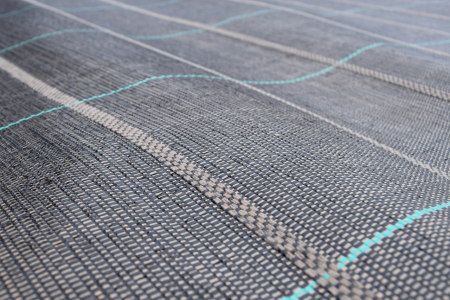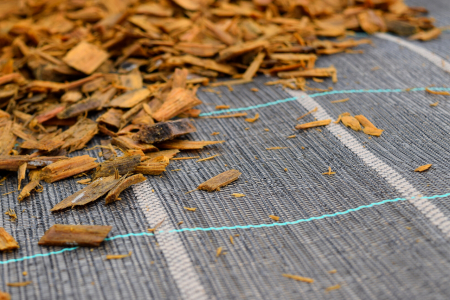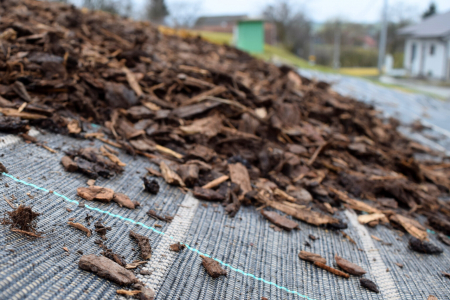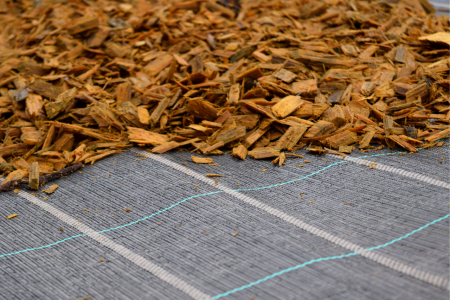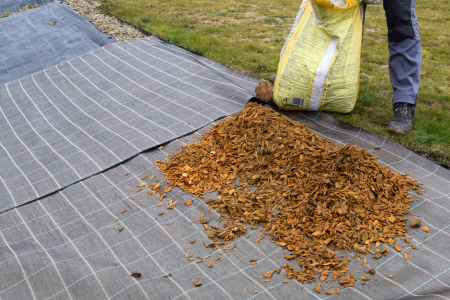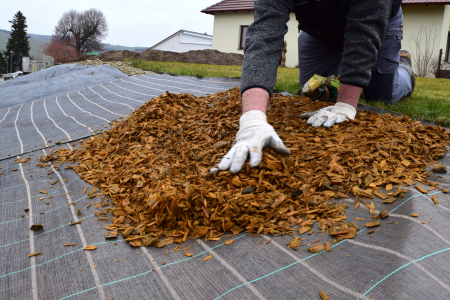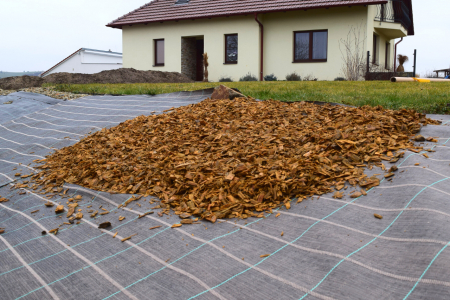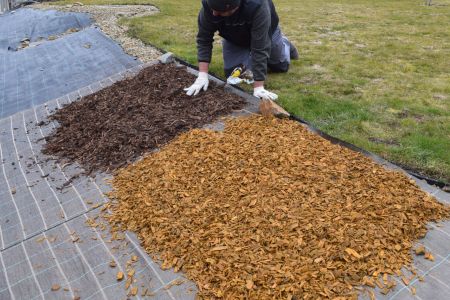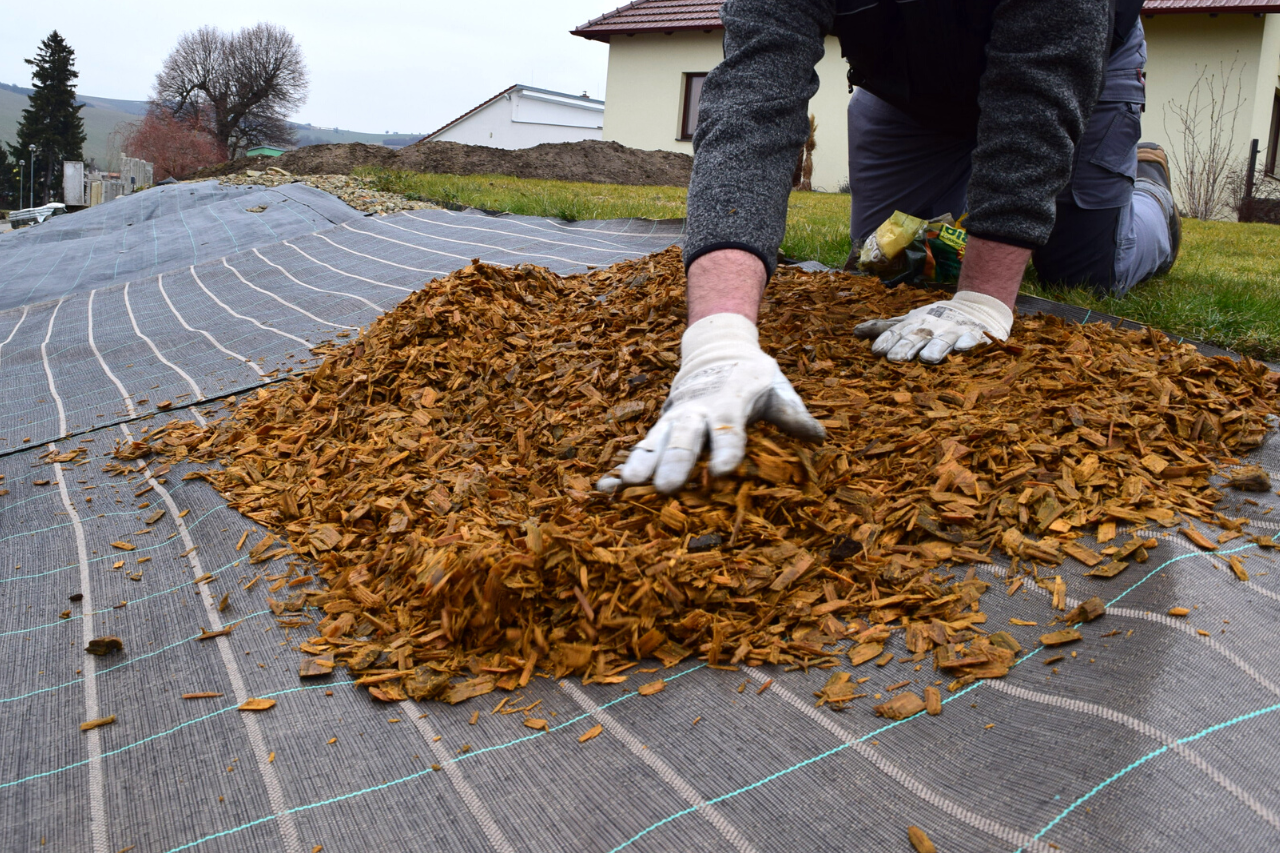
Mulch on Sloped Terrain
The key is not to just lay mulch on the slope. You'd be surprised how quickly it gets washed down by rain.
There’s a wide range of mulching fabrics, but this article focuses on a special woven fabric designed for slopes. Made from plastic strips, it doesn't need to be replaced every few years like natural fibre fabrics. Install it once, then just top up the mulch as needed.
Unlike regular landscape fabrics used in gardens, slope landscape fabric has woven silk strips placed ten centimetres apart. These act as barriers. Silk strips are thicker than plastic ones, and they stick out from the base of the fabric, keeping mulch in place even during heavy rains.
Slope fabric is designed to go under wood mulch (not under pebbles or cobbles).
The bright (silk) strips are higher than the rest of the fabric, helping to hold mulch in place.
Determining Your Slope's Incline
Slope landscape fabric is suitable for slopes with a maximum inclination of 45 degrees. At higher inclinations, the fabric alone won't hold the mulch.
If you're unsure of your slope's angle, estimate it by standing at the base. A right angle is 90 degrees. If there were a wall at the foot of the slope, it would be at 90 degrees to the ground.
If your slope is less than half of that (less than 45 degrees), you’re free to use slope landscape fabric.
Guidelines for Using Slope Landscape Fabric
Slope landscape fabric is perfect for both small garden areas and larger spaces such as parks and areas around office buildings.
Landscape fabric is highly durable and UV-resistant, meaning it won't dry out or become brittle in the sun. Because it's a fabric and not a solid film, it's water-permeable. When it rains, water can easily soak through.
To stabilise the slope even more, try planting shrubs through the slope fabric. Simply cut an X-shaped hole in the fabric and plant your shrub. Keep in mind that once you cut through, the fabric strips of your landscape fabric might start to unravel. For this reason, woven landscape fabric is best for only occasional planting.
If you plan to do a lot of planting, consider using non-woven fabric. It’s made with a different technology that prevents it from unravelling. However, it doesn't have the slope-specific features that help keep mulch in place.
Landscape fabric on slopes also acts as a weed barrier.
How to Install Slope Landscape Fabric
- Even out any dips and bumps.
- Lay the fabric so that the light-coloured stripes run horizontally. This enables them to function as barriers.
- Overlap the fabric strips by about 10 centimetres.
- Secure the fabric with plastic stakes, metal pegs, or stones.
- Spread an even layer of mulch over the fabric.
Slope Landscape Fabric: A New Solution
Special landscape fabric for slopes is a relatively new product. If you plan to use it in your garden, ask for it at well-stocked garden supply stores.
For large quantities, such as for landscaping businesses, we provide rolls of slope landscape fabric — get in touch here. We also supply smaller packs for retail hobby markets and garden centres, and produce private label packaging for bulk buyers.
